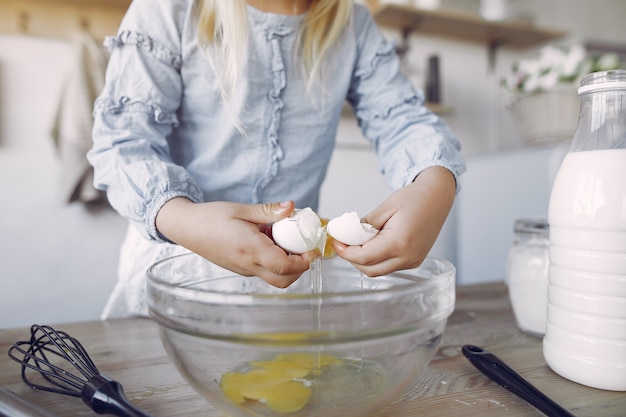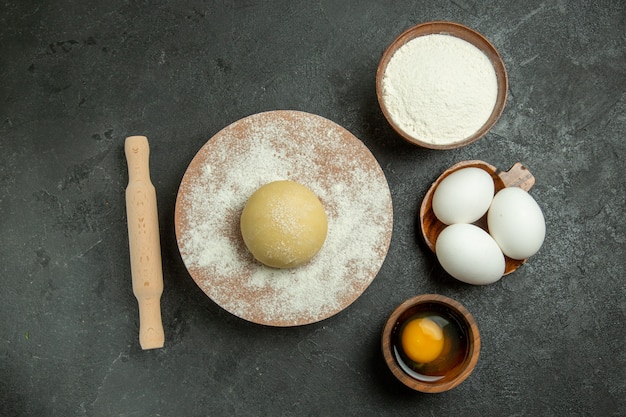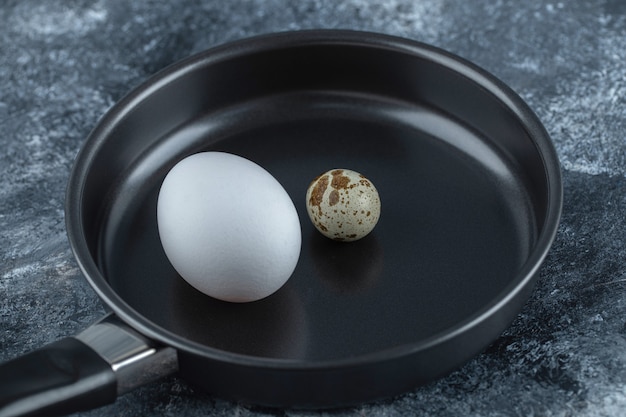Ah, soft-boiled eggs. They're like a little taste of sunshine on a plate, a velvety yolk that melts in your mouth, and a perfectly firm white that holds it all together. I've spent years perfecting my soft-boiled egg technique, and I’m happy to share my secrets with you. This guide will walk you through everything you need to know to create those beautiful, runny gems.
(Part 1) The Egg-cellent Foundations

Before we start boiling, let's talk about the basics. It's all about setting yourself up for success.
Choosing Your Eggs: Freshness vs. Age
There's a whole debate about whether fresh or older eggs are better for soft-boiling. fresh eggs tend to have a vibrant colour and a more delicate texture, while older eggs may have a firmer white and a richer yolk.
Personally, I love fresh eggs for their bright colour, but ultimately, it comes down to personal preference. The key is to choose eggs with intact shells – no cracks or blemishes.
Essential Tools for Success
You'll need a few trusty tools to make your soft-boiled egg journey a breeze:
- A saucepan: Choose one that's large enough to comfortably submerge your eggs. I like to use a stainless steel saucepan because it heats evenly.
- A timer: This is crucial for ensuring you get your desired level of doneness. A kitchen timer with a clear display is ideal.
- A slotted spoon: This will help you gently lower the eggs into the boiling water and remove them without damaging the shells.
- A bowl of ice water: This is your secret weapon for stopping the cooking process and making peeling easier.
(Part 2) Timing is Everything

The magic of soft-boiled eggs lies in the timing. A few seconds too long or too short, and you could end up with a rubbery yolk or a wobbly white. The trick is finding the perfect balance.
The Perfect timing guide for Various Doneness Levels
Here's a table that I've developed based on countless experiments, and, yes, a fair bit of trial and error. It's a handy guide for achieving different levels of doneness:
| Desired Level of Doneness | cooking time (Minutes) |
|---|---|
| Very runny yolk (like liquid gold) | 3-4 Minutes |
| Slightly Runny Yolk (perfect for dipping) | 4-5 Minutes |
| Slightly Set Yolk (a touch of firmness) | 5-6 Minutes |
| Firm Yolk (for those who prefer a more solid texture) | 6-7 Minutes |
Beyond the Table: The Art of Adjusting
Remember, this is just a guideline. You might prefer your eggs a bit more or less cooked. Don't be afraid to experiment and find your ideal timing. And if you overcook them slightly, don't fret! The texture might be a little firmer, but they'll still be delicious.
(Part 3) The Perfect Soft-Boiled Egg Technique: Step-by-Step

Now, let's put those tools and knowledge into action. Get ready to create those perfect soft-boiled eggs.
Step 1: Bring the Water to a Rolling Boil
Fill your saucepan with enough cold water to generously submerge your eggs. Place the saucepan on the stovetop over medium-high heat and bring the water to a vigorous boil. You want a lively, bubbling boil for even cooking.
Step 2: Gentle Introduction: Lowering the Eggs
Once the water is boiling, carefully lower your eggs into the saucepan using your slotted spoon. This gentle approach minimizes the risk of cracking the shells.
Step 3: Set the Timer and Let it Tick
This is the moment of truth! Set your timer based on your desired level of doneness, using the table as a guide. Don't peek! Let the timer do its thing.
Step 4: The Ice-Cold Bath: Stopping the Cooking
As soon as the timer goes off, grab your slotted spoon and quickly transfer the eggs to the bowl of ice water. This ice bath shock is crucial. It instantly stops the cooking process, preventing the yolks from becoming overcooked.
Step 5: Chill Out and Peel
Leave the eggs in the ice bath for a few minutes to chill. This makes peeling a lot easier. Once they're cool enough to handle, gently tap the eggs on the counter to crack the shells. Then, peel them under running water, starting from the wider end.
(Part 4) Secrets and Tips for Egg-ceptional Results
You've got the basics down, but now let's dive into some insider tips that will elevate your soft-boiled egg game.
Tip 1: The Salt Advantage
Adding a pinch of salt to the boiling water can help prevent the eggs from cracking. The salt also adds a subtle, savory flavor to the eggs, enhancing their deliciousness.
Tip 2: The Vinegar Trick (Optional)
While not strictly necessary, adding a splash of white vinegar to the boiling water can also help prevent cracking. The vinegar reacts with the egg white proteins, making them firmer. Just remember, a little goes a long way – too much vinegar can affect the flavor.
Tip 3: Mastering the Art of Peeling
Peeling soft-boiled eggs can be tricky, but there are a few things you can do to make it easier:
- Chill them thoroughly: Make sure your eggs are completely chilled before peeling. The cold temperature helps to loosen the shell.
- Tap them gently: Tap the eggs on the counter to create a few cracks.
- Peel under running water: This helps to loosen the shell and make it easier to remove. Start peeling from the wider end of the egg.
(Part 5) soft-boiled egg recipes: Beyond Breakfast
Soft-boiled eggs are a versatile ingredient that shines in many dishes, not just breakfast.
Recipe 1: Classic soft-boiled eggs on toast
This is a simple yet satisfying classic.
- Two perfectly soft-boiled eggs
- Two slices of toasted bread
- Salt and pepper to taste
Just slice the eggs in half and place them on the toast. Season with salt and pepper, and enjoy!
Recipe 2: Soft-Boiled Eggs with smoked salmon and Cream Cheese
This is a brunch masterpiece!
- Two perfectly soft-boiled eggs
- Two slices of toasted bread
- 2 tablespoons of cream cheese
- 2 ounces of smoked salmon
- A sprig of dill
Spread cream cheese on the toasted bread, top with smoked salmon and a sliced egg, and garnish with dill.
Recipe 3: The Asian-Inspired Soft-Boiled Egg
This recipe brings a touch of Asian flair to your breakfast.
- Two perfectly soft-boiled eggs
- Two tablespoons of soy sauce
- One tablespoon of sesame oil
- One teaspoon of chili flakes
- A handful of chopped spring onions
Whisk together soy sauce, sesame oil, and chili flakes. Pour this mixture over the sliced eggs and top with spring onions.
Recipe 4: soft-boiled eggs with asparagus and hollandaise sauce
This is a gourmet delight for a special dinner.
- Two perfectly soft-boiled eggs
- One pound of fresh asparagus
- Hollandaise sauce (store-bought or homemade)
- Salt and pepper to taste
Steam the asparagus until tender-crisp. Place the asparagus on a plate, top with a sliced egg, drizzle with hollandaise sauce, and season with salt and pepper.
Recipe 5: soft-boiled eggs with mushrooms and Balsamic Glaze
This simple yet sophisticated dish is perfect for a weeknight meal.
- Two perfectly soft-boiled eggs
- One pound of mushrooms (cremini or button)
- Two tablespoons of butter
- Two tablespoons of balsamic vinegar
- Salt and pepper to taste
Sauté the mushrooms in butter until golden brown. Reduce balsamic vinegar over medium heat until it thickens to a glaze. Place the mushrooms on a plate, top with a sliced egg, drizzle with the balsamic glaze, and season with salt and pepper.
(Part 6) The Art of Presentation: Making Your Eggs Look as Good as They Taste
A beautiful presentation can elevate even the simplest dish.
Tip 1: The Power of a Pretty Plate
Choose a plate that complements the dish. A simple white plate creates a clean and elegant look, while a patterned plate adds a touch of whimsy.
Tip 2: A Splash of Colour
Add a pop of colour with fresh herbs, edible flowers, or colourful vegetables. This will make your dish more visually appealing.
Tip 3: A Saucy Touch
Drizzle with sauce to enhance both flavour and presentation. Hollandaise sauce, balsamic glaze, or a simple vinaigrette can work wonders.
(Part 7) FAQs: Common Questions About Soft-Boiled Eggs
Here are answers to some of the most common questions about soft-boiled eggs.
1. How do I know if my eggs are cooked to perfection?
The best way to tell is by visual inspection. A perfectly soft-boiled egg should have a firm white and a runny yolk. You can also gently press on the yolk. If it feels firm, it's overcooked. If it feels jiggly, it's cooked to perfection.
2. What if my eggs crack during cooking?
Don't panic! If your eggs crack, simply remove the cracked egg from the boiling water immediately. You can still eat it, but it might be a bit messier.
3. Can I use older eggs for soft-boiling?
Some people believe that older eggs have a firmer white and a richer yolk. Others, like myself, prefer fresh eggs. Experiment and see what works best for you.
4. What if I overcook my eggs?
If you overcook your eggs, the yolk will be firm. While not ideal, you can still eat them. Just try to use them in dishes where the texture isn't as important.
5. How long can I store soft-boiled eggs?
It's best to eat them as soon as possible after cooking. However, you can store them in the refrigerator for up to 24 hours. Refrigerate them in a container of cold water.
I hope this guide has inspired you to become a soft-boiled egg maestro. Remember, practice makes perfect, so keep experimenting until you find the timing and technique that works best for you. Happy egg-boiling!
Everyone is watching

Prime Rib Roast Cooking Time Chart: Per Pound Guide
Cooking TipsPrime rib roast. Just the name conjures images of lavish dinners, crackling fires, and hearty laughter. It’s ...

How Long to Bake Potatoes in the Oven (Perfect Every Time)
Cooking TipsBaked potatoes are a staple in my kitchen. They're incredibly versatile, delicious, and surprisingly easy to m...

Perfect Rice Every Time: The Ultimate Guide to Cooking Rice
Cooking TipsAs a self-proclaimed foodie, I've always been a bit obsessed with rice. It's the foundation of countless cuisi...

The Ultimate Guide to Cooking Asparagus: Tips, Techniques, and Recipes
Cooking TipsAsparagus. The mere mention of this spring delicacy conjures up images of vibrant green spears, crisp and burs...

Ultimate Guide to Cooking the Perfect Thanksgiving Turkey
Cooking TipsThanksgiving. Just the word conjures up images of overflowing tables laden with delicious food, the scent of r...
